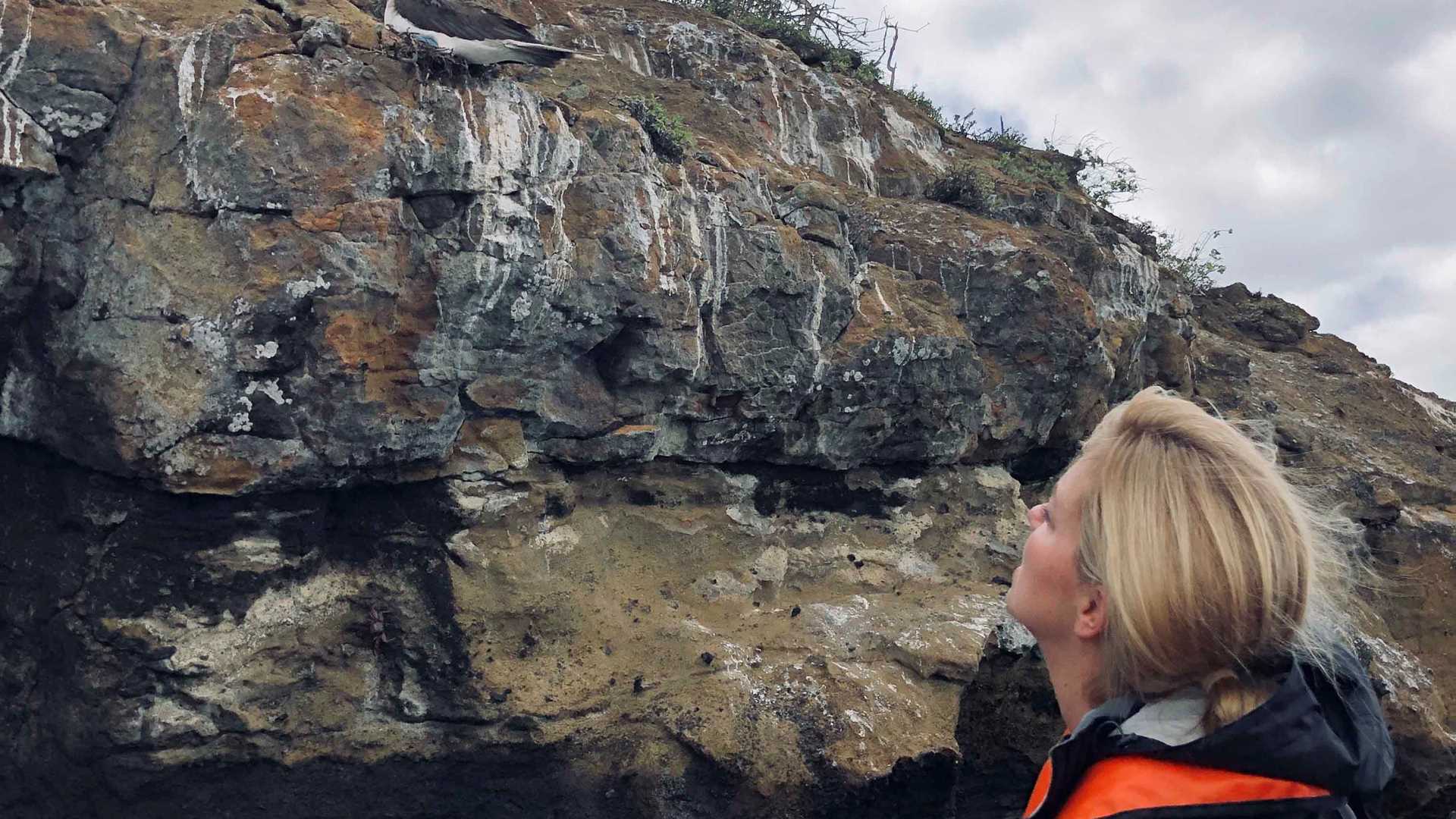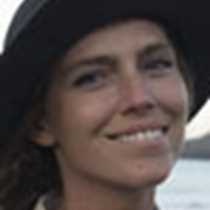Guests onboard National Geographic Endeavour II spent the day exploring the northern region of Santa Cruz Island. We began the day with a hike to Cerro Dragon in search of the creatures for which the site was named: the Galapagos land iguana. While observing these endemic reptiles, we discussed their evolutionary history and ecological behavior. This site is particularly interesting because we can find two endemic iguanas, land and marine, within a small area. The land and marine iguanas are very closely related, sharing a common ancestor from Central America. We walked through a dry forest full of incense trees, spiny bush, and prickly pear and candelabra cacti, discussing the unique adaptations that the vegetation of the coastal lowlands has developed in Galapagos to endure such harsh environmental conditions. At the top of the hill, we enjoyed a lovely view of some of the central islands and took the opportunity to make group photos.
After our hike, we departed for our snorkeling outing; guests had the option of the deep-water snorkeling at Guy Fawkes or beach snorkeling at Cerro Dragon. At Guy Fawkes we observed several white-tipped reef sharks. These oceanic islets are magnets for megafauna such as these, given that they serve as oases in an otherwise deserted oceanic environment; smaller prey fish tend to aggregate in these areas attracting sharks. We also observed many species of tropical fishes. After snorkeling, guests enjoyed a special treat for lunch: the Ecuadorian buffet. All the traditional Ecuadorian cuisine was present, including coconut fish, seafood ceviche, and potato cakes with peanut sauce. Our hotel manager, Jonathon, spoke to guests about Ecuadorian traditions and culture.
In the afternoon, we set off for a Zodiac cruise around northern Santa Cruz and Eden Islet. We observed juvenile black-tipped reef sharks in the mangrove areas and discussed how this habitat serves as an important nursery for juvenile fishes. The blue-footed boobies were quite active in the area, plunge diving right next to the Zodiac. We were excited to find a juvenile blue-footed booby perched next to its parent, still exhibiting its down plumage. We also observed brown pelicans diving and the striated heron stalking its prey. After the Zodiac cruise, guests joined one of our naturalists, Benjamin Ayala, for a lecture on the human history of the Galapagos Islands.
At sunset, guests enjoyed a wine tasting event while circumnavigating Daphne Major. This islet is the site of the famous evolutionary biology work of finches conducted by Peter and Rosemary Grant. We watched the sun go down, wine in hand, tying a ribbon on yet another beautiful day in paradise.







